Yungang Grottoes
Yungang Grottoes is located in the southern foot of Wuzhou Mountain, 17 kilometers west of Datong City, Shanxi Province, northern China. The grottoes are excavated along the mountain and stretch one kilometer east-west. There are 45 main grottoes, 252 large and small niches, and more than 51,000 statues. They are one of the largest ancient Grottoes in China. They are also known as the art treasures of the four major Grottoes in China, together with the Mogao Grottoes in Dunhuang, Longmen Grottoes in Luoyang and Maiji Grottoes in Tianshui.
In 1961, it was announced by the State Council as the first batch of key cultural relics protection units in China. On December 14, 2001, it was listed on the World Heritage List by UNESCO. On May 8, 2007, it was appraised as the first batch of national 5A-level tourist attractions by the National Tourism Administration.
In the Northern Wei Dynasty, the excavation of Yungang Grottoes lasted for more than 60 years from the beginning of Emperor Wencheng's Peace Period (460) to the fifth year of Emperor Xiaoming's Zhengguang Period (524). Later, in the Eastern Wei, Northern Qi, Sui and early Tang Dynasties, Pingcheng was transformed into Heng'an Township in Yunzhong County.
In the Tang Dynasty, according to Cao Yan's Notes on the Restoration of the Great Grottoes Temple in the Mountains of Beijing and Wuzhou in the Western Jin Dynasty (1147), "Fifteen Years of Zhenguan (641), the rebuilding of the minister-in-charge". As recorded in Tang Huixiang's volume "Ancient and Cool Biographies" (Ancient and Modern Scenic Sites III), there was a Buddhist ritual Buddhist monk who "repaired the old statues of Xiaowen Grottoes in Heng'an In Xianheng four years (673) finally Shishi. After the early Tang Dynasty, Pingcheng was depressed, and the construction of Yungang Grottoes was not affected by many factors.
During the period of Liao Jin, Liao Xingzong and Dao Zong, the Liao Royal Family carried out a large-scale renovation of Wuzhou Mountain Grottoes Temple for ten years. Ten monasteries, including Tongle, Lingyan, whale worship, Zhenguo, Huguo, Tiangong, Chongfu, Tongzi, Huayan and Dudu, were built in front of the grottoes, and more than 1,000 Buddhist statues were renovated. In the second year of Liaobao University (1122), Jinbing seized Datong and "the temple was burned, Lingyan buildings were swept away" (The Great Jin Xijing Restoration of Huayan Monastery Stele). In the three to six years of Jinhuangtong (1143-1146), the Dharma Master had the wisdom to rebuild the Lingyan Pavilion (the attic outside the third cave today), "It's all right, the weather at the mountain gate is over. "("Golden Monument").
In Yuan Dynasty, there were still temples and temples in Wuzhou Mountain Grottoes.
In the Ming Dynasty, Yungang in Datong was once again abandoned. The name of Yungang began in the Jiajing period of the Ming Dynasty. In the late Ming Dynasty, in 1644, Li Zicheng's rebellion army passed through Datong. After Zhang Tianlin was stationed in the army of the Qing Dynasty, the temple of Yungang was attacked by soldiers and reduced to ashes.
In the Qing Dynasty, the Yungang Monastery was rebuilt during the eight years of Shunzhi in the Qing Dynasty (1651). The existing wooden eaves and monasteries of caves 5 and 6 were rebuilt for this purpose. In 1696, Emperor Kangxi visited Yungang Monastery in winter and inscribed "solemn phases" on the inscriptions. The Yungang Grottoes were repaired during the reign of Qianlong in the Qing Dynasty.
In modern times, the People's Republic of China was founded in 1949. The main caves in Yungang Grottoes and the wooden structures in front of the caves (caves 5, 6 and 7) are well preserved. In 1952, special protection institutions were set up to properly protect grotto cultural relics and open them to the public.
Development period
The Buddhist art of Yungang Grottoes can be divided into three stages: early stage, middle stage and late stage according to the development of grotto shape, statue content and style.
Early Grottoes: Caves 16-20, also known as the Five Grottoes of Tan Tan. According to "Wei Shu Shi Lao Zhi" (Volume 114), it is recorded that "at the beginning of peace, teachers died. It was replaced by Yan Yan, renamed Salmonton. At the beginning, Tan Ying was sent to Beijing from Zhongshan in the year of the restoration of Buddhism. He was on duty to the emperor. He was seen on the road. He wore his clothes in front of the emperor. At that time, people thought that the horse knew good people and the emperor worshiped the rites of teacher. Emperor Shin Tan Bai, in the capital city of Xiwuzhou Sai, chiseled stone walls and opened caves in five places, built Buddha statues of one, 70 feet high, 60 feet high, magnificent sculpture, crowned with a lifetime. The five cave openings described in this article are the famous monk Xin Xin, who chose Zhong Lingyuxiu's Wuzhou Mountains to excavate the magnificent five caves of Xin Xin, which opened the prelude of the excavation of Yungang Grottoes. Cave 16-20 is the Five Grottoes of Tan, which is the symbol of the emperor. The plane is horseshoe shaped, with a dome and a thousand Buddhas carved on the outer wall. The main statue is Buddha III. The statue is tall, round, with a high nose, deep eyes and shoulders. It shows a strong, thick and simple style of statue. Its sculpture inherits and develops the excellent traditions of the Han Dynasty, absorbs and integrates the essence of the ancient Indian art of Jadhara and Jadhara, and creates a unique artistic style.
Medium-term grottoes: the peak stage of Yungang Grottoes carving, mainly Grottoes 1, 2, 5, 6, 7, 8, 9, 10, 11, 12, 13 and unfinished Grottoes 3. This period (471-494) was the filial piety period before the Northern Wei Dynasty moved to Luo. It was the most stable and prosperous period in the Northern Wei Dynasty. The Yungang Grottoes were a collection of excellent talents from all over the country, guaranteed by its national strength, and then carved out a more prosperous and exquisite large statue of Yungang Grottoes. Before Emperor Xiaowen moved to the capital, all the large grotto statues managed by the royal family had been completed, which lasted more than 40 years. Medium-term cave plane is mostly square or rectangular, some cave carved central tower column, or with front and rear chambers, wall layout of upper and lower layers, left and right segments, the top of the cave mostly has flat algae wells. The theme of the statue is diversified, highlighting the status of Sakya and Maitreya Buddha. The two Buddhas of Sakya and Dobao sit side by side. There are Buddhist gods, karaoke heavens, providers, Buddha's nature, nature, karma and Vimalakirtic stories. The Buddha statues are round and moderate in appearance. Especially, the Buddha statues with bowed clothes and ribbons are prevalent. Many new themes and statue combinations have emerged, focusing on the image of Dharma protection and various decorations. The mid-term grottoes are also active in the period of reform and innovation, which initiated the process of Sinicization of Buddhist grotto art. The so-called magnificent Taihe style is also produced by the combination of these factors. Its main feature is that the trend of Sinicization develops rapidly. The Sinicization of grotto art started and completed in this period, that is, the mid-Yungang Grottoes. Its complex content and exquisite sculpture features are quite different from those of the early grottoes. Sculpture modelling pursues neatness and gorgeousness. It has obvious Chinese characteristics from cave shape to sculpture content and style.
Late Grottoes: After the Northern Wei Dynasty moved to Luoyang (494), the large-scale excavation of Yungang Grottoes ceased, but the wind of grottoing statues spread to the lower and middle strata, and the relatives, officials of the middle and lower strata and the Yiren believers made full use of the old skills of Pingcheng to dig a large number of small and medium-sized caves in Yungang, which are small niches. The construction of Pingcheng lasted for five years (524) until Emperor Xiaoming's reign in Zhengguang. Pingcheng, as the capital of the Northern Wei Dynasty, was still the important place of Buddhism in the Northern Wei Dynasty. At this time, the large caves were reduced, and the small and medium niches were covered with cliffs from east to west. It mainly distributes to the west of Cave 20, including cave 4, cave 14, cave 15 and small niches on the cliff west of Cave 11. There are about 200 small and medium-sized caves. Most of the caves are in the form of single caves, which are no longer grouped. The themes of the statues are mostly Sakyamuni or Maitreya on the top and Sakyamuni on the bottom. The statues of Buddha and Bodhisattva were thin, long neck, narrow shoulder and downward cut. This statue was a fresh and elegant artistic image of "beautiful bones and clear images" in the late Northern Wei Dynasty, which became a prominent feature of Buddhist statues in the late Northern Wei Dynasty. This feature and style are also reflected in the Northern Wei Grottoes of Longmen Grottoes, which has had a profound impact on the development of Chinese grotto temple art.
Introduction to cave
The first cave and the second cave are double caves, located at the eastern end of Yungang Grottoes. Two square tower pillars are carved in the middle of the first cave, with Maitreya on the back wall and mostly weathered and denuded Buddhist statues on the four walls. Vimo and Manjusri are carved on both sides of the South cave gate, and Buddhist story reliefs at the bottom of the east wall are well preserved. In the middle of the second cave, a square three-storey tower pillar is carved with three pavilion-style Buddhist niches on each floor and four sides, and five inside caves are carved. Layer pagodas are the image materials for studying the architecture of the Northern Wei Dynasty.
The third cave is the largest cave in Yungang. Its front wall is about 25 meters tall. It is passed down as the Tan Tan translation tower. The cave is divided into front and back rooms. A Maitreya cave room is cut in the upper part of the front room and a pair of three-storey square pagodas are cut out from the left to the right. On the South and west side of the back room, there are three statues with round appearance, full muscles, fine corolla and smooth clothes. The Buddha sits about 10 meters tall and the statues of the two Bodhisattvas are 6.2 meters tall. From the style and sculpture of the three statues, it may have been carved in the early Tang Dynasty (seventh century A.D.).
In the fourth grotto, a rectangular column is carved in the middle of the grotto, six Buddha statues are carved on the north and South sides, and three Buddha statues are carved on the East and West sides. The Zhengguang Period of the Northern Wei Dynasty (520-525 A.D.) is inscribed above the gate of the Nanbi Grottoes, which is the latest existing inscription of the Yungang Grottoes.
The fifth grotto, located in the middle of Yungang Grottoes, is a group of double Grottoes with six grottoes. The cave is divided into front and back chambers. The main image on the north wall of the back chamber is Buddha III. The central statue is 17 meters high. It is the largest statue of Buddha in Yungang Grottoes. The walls of the cave are covered with niches and statues of Buddha. On both sides of the arch, there are two Buddhas sitting opposite each other on the top of the Bodhisattva tree, with beautiful lines. There are five four-storey pavilions in front of the two caves. The existing buildings were rebuilt in the eighth year of Shunzhi in the early Qing Dynasty (A.D. 1651). The sixth cave has a square plane and a two-storey square tower connecting the top of the cave. It is about 15 meters high. Under the tower pillar is called a big niche, with statues of Buddha sitting in the south, Buddha sitting in the west, Yingdaobao sitting in the north, and cross-footed Maitreya statues in the east. Thirty-three reliefs of Buddhist stories describing Sakyamuni's birth to Taoism were carved on both sides of the niche and the east, South and west walls of the cave and on both sides of the open window. This grotto is the most representative one in Yungang Grottoes with its magnificent scale, rich carvings and refined techniques.
In the seventh grotto, there are three wooden eaves built in front of the grotto, and there are two rooms in the grotto. Bodhisattva sits in Leo on the upper wall of the rear chamber. On the east, West and South walls, there are sculptured statues of Buddha niches, and on the South Gate arch, there are six Buddhas, which are beautiful and lifelike. The relief on the top of the cave is flying in the sky, vivid and lively, with lotus flowers as the center, circling and dancing, and moving.
In the eighth grotto, there are five domesticated domesticated domesticated peacocks on both sides of the grotto and three domesticated domesticated domesticated domesticated domesticated domesticated domesticated domesticated domesticated domesticated domesticated domesticated domesticated domesticated domesticated domesticated do
The ninth cave is divided into front and back rooms. The front door and arch pillars are octagonal. There are Buddhist niches, musical figures and dancing figures engraved on the wall of the chamber. The statues are vivid and dynamic.
The tenth cave was excavated at the same time as the ninth cave and divided into two rooms. The anterior chamber has a flying sky, graceful posture and coordinated proportions. On the top of the open window, the composition of stone carvings is complex, exquisite and attractive.
In Cave 11, there are square tower columns directly to the top of the cave, and Buddha statues are carved on all sides. On the front, the statue of Bodhisattva is well preserved. The walls around the cave are covered with statues and Buddhas in niches.
The twelfth cave is carved with music, music and percussion instruments on the top of the main wall. It has a very different look and vivid image. The classical instruments such as the chord and the chord in their hands are very precious, and they are important materials for the study of Chinese music.
In Cave 13, there is a statue of the cross-footed Maitreya Buddha at the middle end. It is more than 12 meters high. There is a statue of a bracket of mighty men carved between the left arm and the leg. This is the only case in Yungang Grottoes. The seven Buddha statues on the upper arch of Nanbi Gate are exquisitely decorated and elegant.
In Cave 14, the statues are mostly diversified. In the upper part of the West wall, there are still some square Buddhist pillars on the east side of the statues.
In Cave 15, there are more than 10,000 statues of small Buddhas sitting in the cave, known as the Cave of Ten Thousand Buddhas.
Cave 16, caves 16 to 20, are the first five caves to be excavated in Yungang Grottoes. They are commonly known as "the Five Grottoes of Xinxin". The sixteen caves are oval in plane. The central image of Sakya, 13.5 meters high, stands on the lotus pedestal, with thousands of Buddhas and niches carved on the walls. Cave 17, the main image is Buddha III, in the middle of which is a sitting image of Jiao Mai, 15.6 meters high. Eastern and Western niches are sitting in the East and standing in the west. The Buddhist niches of the 13th year of Taihe in the Northern Wei Dynasty (AD 489) to the east of the Ming Window were later carved.
Cave 18, the neutral statue as high as 15 meters, the right arm exposed, dressed in a thousand Buddha's robe, delicate depiction, vivid and moving.
The nineteenth cave, the main image is the third statue. The statue of Sakya sitting in the cave, 16.8 meters high, is the second largest statue in the Yungang cave. Outside the cave, two ear holes were cut out, each carving an 8-metre sitting statue.
Cave 20, the front zone of the cave had collapsed before the Liao Dynasty, and the statue was completely open-air. The statue is three Buddhas, the middle Sakya sitting statue, 13.7 meters high. The statue has a full face, broad shoulders, magnificent shape and vigorous spirit. It is the representative work of Yungang Grottoes sculpture art.
Heritage value
The statues in Yungang Grottoes are magnificent and rich in content. They can be regarded as the crown of Chinese stone carving art in the 5th century A.D. and the treasure house of ancient Chinese carving art. According to the excavation time, it can be divided into three periods: early, middle and late. The grotto statue styles in different periods also have their own characteristics. In the early period, the "Five Grottoes" had great momentum, with a strong and simple western atmosphere. In the middle period, the grottoes are famous for their exquisite carvings and gorgeous decorations, which show the complex and changeable artistic style of the Northern Wei Dynasty. Although the size of the late Grottoes is small, the figures are thin, handsome and moderately proportioned, which is the model of grotto art in northern China and the origin of the "thin and clean image". In addition, the music and dance and acrobatic sculptures left behind in the grottoes also reflected the prevailing Buddhist ideas and social life in the Northern Wei Dynasty.
The Yungang Grottoes vividly record the historical development of Buddhist art from India and Central Asia to Chinese Buddhist art, reflecting the gradual secularization and nationalization of Buddhist statues in China. Various Buddhist Art Statue styles have achieved unprecedented convergence in Yungang Grottoes.
Yungang Grottoes are the beginning of the "sinicization" of grotto art. The Chinese palace sculpture in the middle period of Yungang Grottoes and the Chinese Buddhist statue niches developed on this basis have been widely used in the later construction of grotto temples. The layout and decoration of the caves in the late Yungang Grottoes highlight the strong Chinese style of architecture and decoration, reflecting the deepening of the "Sinicization" of Buddhist art.
Honors
In January 2001, it was rated as a national
4A-level tourist area (spot) by the National Tourism Administration.
In December 2001, it was listed in the World Heritage List by UNESCO World Heritage Committee.
In January 2002, it was appraised as "Ten Best Civilized Scenic Spots" by Shanxi Provincial Steering Committee for the Construction of Spiritual Civilization.
In September 2002, it was appraised as "National Civilized Scenic Spot Demonstration Site" by the Central Committee for the Construction of Spiritual Civilization, the Ministry of Construction of the People's Republic of China and the National Tourism Administration.
In December 2002, it was awarded "Advanced Collective of National Cultural Relics System" by the Ministry of Personnel of the People's Republic of China and the State Administration of Cultural Relics.
In February 2004, it was appraised as Shanxi Civilization Scenic Spot from 2002 to 2003 by Shanxi Spiritual Civilization Construction Committee.
In 2005, Datong Municipal Government awarded advanced work units for safe production.
In March 2006, Yungang Grottoes Research Institute was appraised as an advanced collective of archives work in Shanxi Province by Shanxi Personnel Bureau and Shanxi Archives Bureau during the Tenth Five-Year Plan period.
In May 2006, it was awarded the "Top Ten Most Popular Scenic Spots in China" by China News Agency Evaluation Center.
In June 2006, it was awarded "Model Unit for Cultural Relics Protection in Shanxi Province" by Shanxi Provincial People's Government.
In August 2006, it was appraised as a "pacesetter of civilized units at the municipal level" by the Datong Municipal Committee of the Communist Party of China and the Datong Municipal People's Government.
In September 2006, it was named "the most attractive place in China" by the First Summit on Brand Promotion of Chinese Tourism Resorts.
In October 2006, it was named "the most desirable place in China in 2006" by China Tourism Television Association.
In 2006, the Datong Labor Competition Committee recorded the "collective first-class service" for fire safety in Yungang Grottoes.
In January 2007, it was named "China's Charming Scenic Spot" by many organizations such as Asia-Pacific Tourism Association.
In April 2007, it was awarded "Top Ten Brands of National Cultural Tourism in 2006" by the National Organizing Committee of Ten Brands of National Cultural Tourism.
On May 8, 2007, it was appraised as the first batch of national 5A-level tourist attractions by the National Tourism Scenic Area Quality Grading Committee.
On June 11, 2007, Datong Municipal Committee's propaganda department, Datong Newspaper and other units ranked as the top ten city business cards of Datong City.
In November 2007, it was awarded "Excellent Tourism Scenic Spots in China" by the Organizing Committee of China Tourism Forum.
In 2008, China's best tourism brand scenic spots and China's most internationally influential leisure tourism scenic spots.
Opening Hours
Summer: April 15-October 27, 8:30-17:20; Winter: October 28-April 14, 8:30-17:00; Holidays properly extended open and closed.
Route line
Shinxin Square - Foguang Avenue - Respect Buddha Embossed Wall - Lingyan Temple (Mountain Hall and Water Hall) - Writing Sutra Court - Grottoes - Premier Zhou Memorial Hall - Shadow and Puppet Hall of Northern Wei Dynasty of Yungang - Yungang Exhibition Hall - Performing Arts Center - Food Street
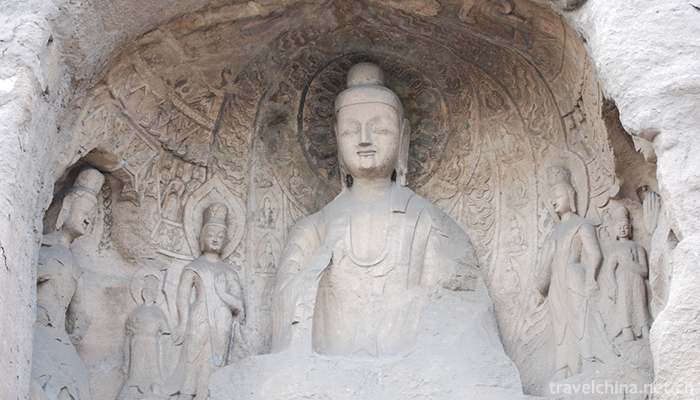
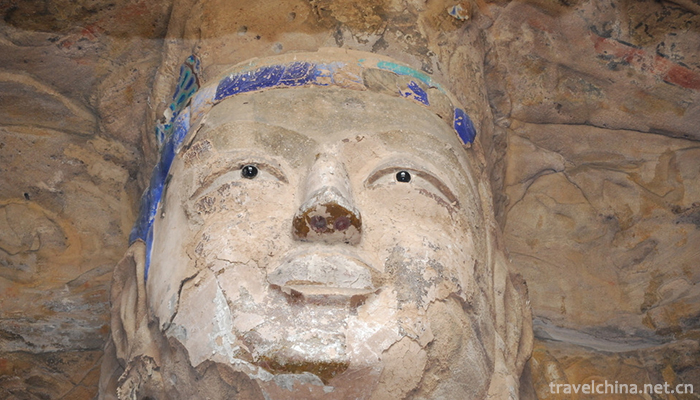
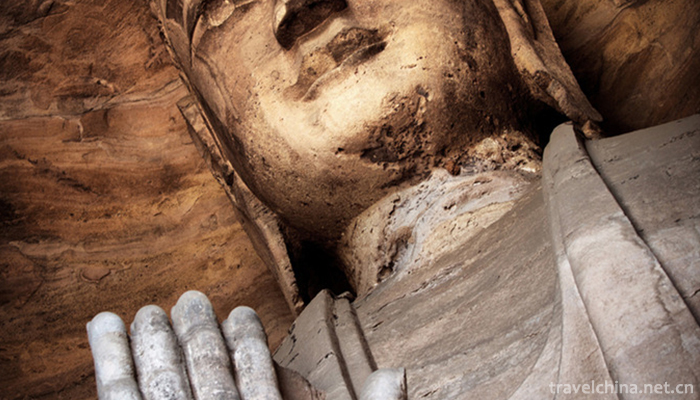
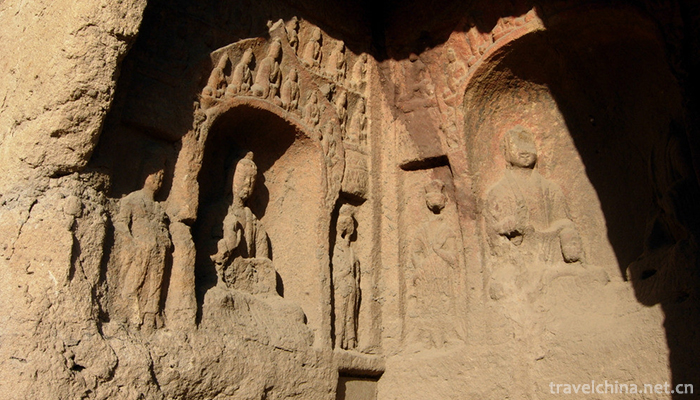


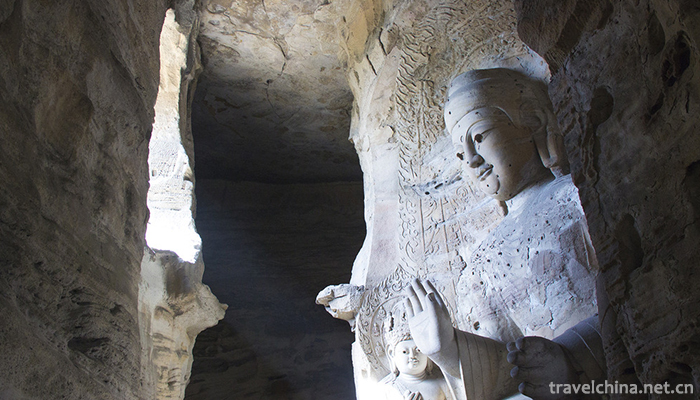



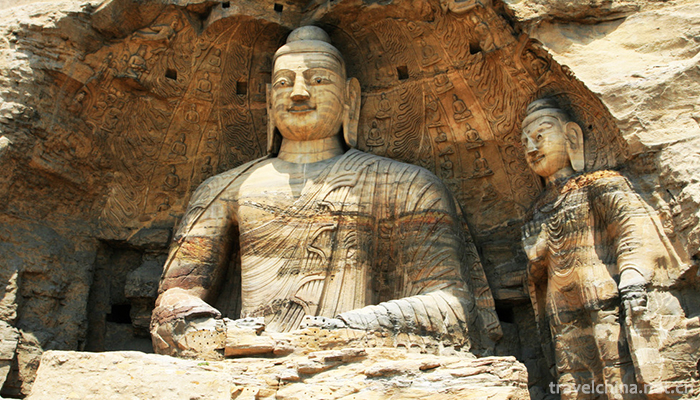
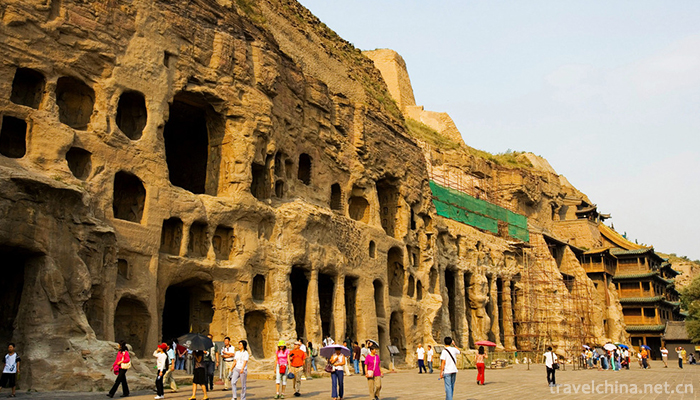

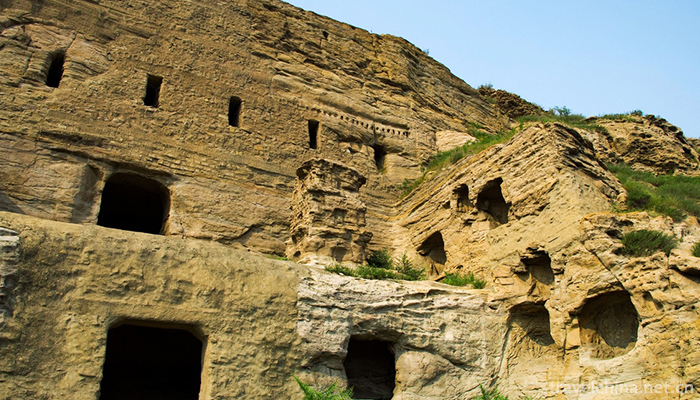
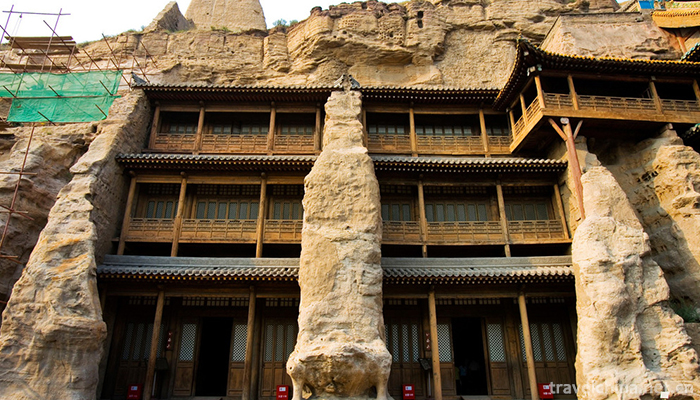
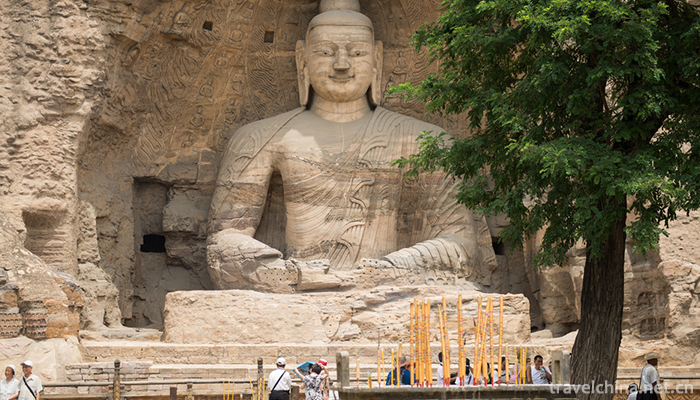
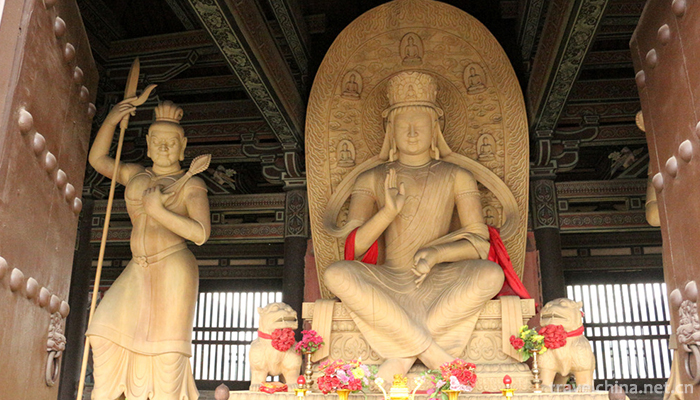
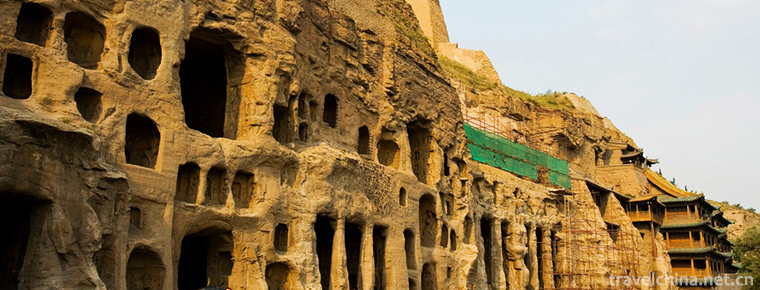
-
1.Taierzhuang Ancient Town
Taierzhuang Ancient City, located at the center of the Beijing-Hangzhou Grand Canal, is located at the junction of Taierzhuang District, Zaozhuang City, Shandong Province
Time 2018-12-08 -
2.Jin Memorial Temple
Jinci Temple is located in Jinci Town, Jinyuan District, Taiyuan City, Shanxi Province. It was originally called Jinwang Temple and was first named Tang Shuyu Temple.
Time 2019-01-29 -
3.Imakan of Hezhe Nationality
Imakan is a unique rap art of the Hezhe people in Northeast China. Its performance form is a combination of one person's rap and singing. It has no accompaniment with musical instruments and uses the
Time 2019-05-03 -
4.Kirgiz embroidery
Kirgiz embroidery is a traditional embroidery in Wensu County, Xinjiang Uygur Autonomous Region, China. Kirgiz women are good at embroidery. They embroider various delicate patterns on headscarves, pi
Time 2019-05-09 -
5.Traditional cooking techniques of Liao cuisine
In April 2016, "Liao cuisine traditional cooking skills" was approved by the State Council as a national intangible cultural heritage, Liao cuisine became the first major cuisine department
Time 2019-05-13 -
6.Wuhe Folk Song
Wuhe folk song is a traditional form of folk song which is popular in Wuhe County and its surrounding areas in Anhui Province. There are three categories: labor chant, Yangge (Tiange) and minor. Among
Time 2019-06-29 -
7.Southwest Medical University
Southwest Medical University is an ordinary university in Sichuan Province. It is located in Luzhou, a famous historical and cultural city and a civilized city in the region of Sichuan, Yunnan, Guizho
Time 2019-08-31 -
8.Chongzhou jiulonggou scenic spot
Chongzhou jiulonggou scenic spot is located in Sanlang Town, Chongzhou City, with an area of more than 170 square kilometers and 76 kilometers away from Chengdu City. Jiulonggou is known as "Dragon Palace on earth".
Time 2020-11-05 -
9.Kangding yak meat
There are many wild medicines such as Fritillaria, Cordyceps and so on growing in these areas over 3500 meters. Yaks often eat these herbs, and their meat is incomparably delicious. After being killed, they can be roasted in brown sauce, stewed or dried in the cold
Time 2020-12-06 -
10.National characteristics of Chinese embroidery
Nationality is the distinctive feature of Qinghai Folk Embroidery. In the long process of development, Qinghai embroidery has formed its own unique style. Due to the consistency of language, religious belief, festival etiquette, culture and entertainment,
Time 2020-12-12 -
11.Cultural undertakings in Guangan
As of 2019, there are 5 radio and TV stations and 2 Radio and TV stations in Guang'an City. The comprehensive coverage rate of broadcasting is 99.7%, and that of television is 99.8%. There are 7 public libraries, 21 theatres and theatres, 4 museums an
Time 2020-12-19 -
12.Dazhou City honor
On June 9, 2020, Dazhou was awarded the advanced municipal Party committee and government of Sichuan Province in promoting the development of service industry.
Time 2020-12-20